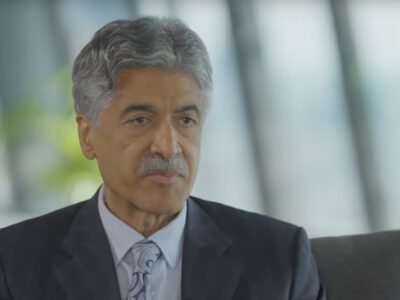Air Arabia CEO Adel Ali seems to have a penchant for the number six. Last year, for instance, the Sharjah-based low cost carrier received six Airbus A320 aircraft, while passenger services were also launched to six new destinations. This year, again, six Airbus A320s will be introduced into the airline’s fast-expanding fleet, the first of which has already been delivered.
“What can I say, we like the number six,” the executive laughs when questioned about the number’s reoccurrence. “Did I mention, our passenger traffic increased by six percent last year? Perhaps it’s a lucky number!” According to Chinese culture, Ali might actually have a point, as the number six is considered auspicious and often linked to good business.
This could explain why, at a time when several Middle Eastern airlines are counting their losses from a dismal 2011, Air Arabia’s turnover and passenger volumes have continued to skyrocket. “With recent challenges such as political unrest in the region, soaring fuel prices and weak economic conditions in parts of the west, its been a turbulent year for the airline industry as a whole,” reflects the Bahraini national. “However, while there has been some impact on our operations, we continued to outperform the market. Air Arabia’s annual turnover was a record US$653.4 million last year, around 16 percent more than 2010 levels, and we served 4.7 million passengers, which is our highest number to date.”
Such accomplishments have been credited to a “robust business model, a highly-focused management team and excellent cost controls” by Ali, who was selected to head Air Arabia in 2003, following one-and-a-half years at Gulf Air and around two decades at British Airways. His appointment was more than justified when Air Arabia reached breakeven after its first year of operations, with continued profitability ever since.
However, after scaling an impressive peak of $138 million in 2008, net profits have been spiralling downwards on a gradual basis, dropping to $124 million in 2009, $84.3 million in 2010, and $74.6 million last year. Ali seems confident that the profitable streak will continue uninterrupted for the airline, which is listed on the Dubai Financial Market, although he admits it’s “a bit too early” to make accurate predictions for this year. “Many of the challenges from 2011 are still clouding the industry, but Air Arabia’s performance in the initial months of this year has been very encouraging and we are aiming for a good year, not only from our Sharjah base, but the additional hubs we opened in Morocco and Egypt too.”
It seems likely the low cost carrier will continue its push into new markets, following the success of last year’s service launches to Moscow and Yekaterinburg in Russia, Kharkiv and Donetsk in Ukraine, and Gassim and Yanbu in Saudi Arabia. Non-stop services were also introduced from its Alexandria hub to Riyadh and Dammam in Saudi Arabia, as well as the Italian city of Milan.
“We are constantly exploring opportunities for our route network and have a long wish-list of destinations that we would like to serve. These are prioritised based on a variety of factors, such as their ability to complement our existing operations, their likely contribution to our bottom line, and their long-term growth potential,” states Ali.
“Back in 2004, for instance, we were heavily focused on India, because it was a big market with a large population and fast-growing economy. As a result, we spread our wings across the subcontinent, which now accounts for around 35 percent of our total passenger numbers. Today, we feel the same way about Russia and the Commonwealth of Independent States (CIS), which is a huge market with residents that are extremely comfortable to visit this part of the world,” he continues, adding that individual breakeven targets are often assigned to new routes, although Air Arabia’s financial expectations are never short-term.
“In our business, you need a lot of patience and tolerance. So, we have realistic, long-term targets in mind and it’s understood that some breakevens will occur faster than others,” maintains Ali. “With last year’s route launches, our initial objectives have successfully been achieved. None of the new services are burning cash, which is good, and obviously they will further develop over time, eventually moving into breakeven and then profitability.”
Article continued on next page…
Moscow, in particular, has been a star performer for Air Arabia ever since flights were inaugurated in October 2011. As a result, the carrier’s frequency to the Russian capital was increased earlier this year to five flights a week, an extra two flights in comparison to the initial schedule. In fact, says Ali, the development of existing services in response to strong passenger demand will be a common occurrence over the coming months, with Kuwait next in line for greater frequency.
“We operate flights to 75 different destinations from our three regional hubs and when you get 85 percent seat factor on a route, you know demand is sufficient for added frequency. So, we will keep an eye on our top performing routes for future opportunities,” he explains.
“Of course, there’s always some fluctuation in terms of which services are our most popular. Last year, our central Asia routes performed very well, together with the Indian subcontinent and Saudi Arabia, while Turkey was also reasonably good,” he adds.
“Other destinations, such as Egypt, Yemen and Syria, were impacted by political unrest and therefore failed to meet expectations. But even then, given the circumstances, traffic was surprising good and our seat factor was still around 75 to 78 percent, with the exception of perhaps Yemen. We actually suspended operations to the country as a temporary measure last year, not because of security concerns, but due to weak demand. If a route is not performing well and losses money in the long-term, we will come out of them. Having said that, since our operations were launched eight years ago, we have only dropped two routes on a permanent basis. The first was Sharm El Sheikh in Egypt, which is a great destination if you live in a European country without sea, such as Germany. But in this country, it’s easier to visit Fujairah for the weekend. Second, we terminated our service to Yerevan in Armenia because the business was insufficient with limited growth prospects, so it became stagnant.”
With such ambitious projections for route launches and service enhancements, Ali remains somewhat concerned about ‘red tape’ in parts of the Arab world, which limits access to Air Arabia and other airlines. For several years now, he has been a vocal advocate of implementing an open skies policy in the region to create a level playing field.
“There’s no doubt the Middle East would benefit from a very liberal open skies policy, because its been proven that the more people travel, the better the economy, as that’s something we need in the Arab world. Look at what happened in 2011; perhaps the regional unrest could have been avoided with improved job prospects and security? There have been some encouraging signs in the last five years. Take Saudi Arabia for example, we previously offered flights to three airports in the kingdom, but as the market became more liberal, that number doubled to six airports. Kuwait is another example, since embracing the open skies approach, traffic has increased at the airport, they are building a new terminal, standards have improved and more Kuwaitis are working there. Having said that, has enough progress been made? No. I think a lot more has to be done.”
Another pressing matter for Air Arabia is fleet development. The carrier will receive an additional 35 Airbus A320s between now and 2016, as part of a multi-billion dollar order placed in 2007 for 44 aircraft. To support the growing fleet, a state-of-the-art hanger was opened at Sharjah Airport last year, allowing maintenance, repair and overhaul (MRO) operations to be brought in-house. Built on a land area of 1502 square metres, the new hanger is currently staffed by 165 employees – a number that is expected to reach 500 by 2017. “We recently completed our first ‘C check’ of Airbus A320 aircraft, which is required to be carried out every 14 months to ensure the safety, performance and reliability of commercial aircraft,” Ali beams with pride.
With only four years until the final deliveries are received from its 2007 aircraft order, Air Arabia has also been keeping a watchful eye on market developments to satisfy its longer-term fleet requirements. “Fleet planning is a regular process and takes place every three to six months,” explains Ali.
“As a company, we are following aircraft developments, although this is not a race and we need to wait until the market settles before placing an order. However, assuming certain targets are met, then we are likely to need additional planes for 2017 onwards. When you operate a smaller fleet, it makes economic sense to operate a single type of aircraft, which we have done with the A320. However, our fleet has reached a stage where we can consider another aircraft type. So, while we are looking at the Airbus A320neo, there is also interest in the Boeing 737 Max and the Bombardier CSeries. Only time will tell which direction we head.”








